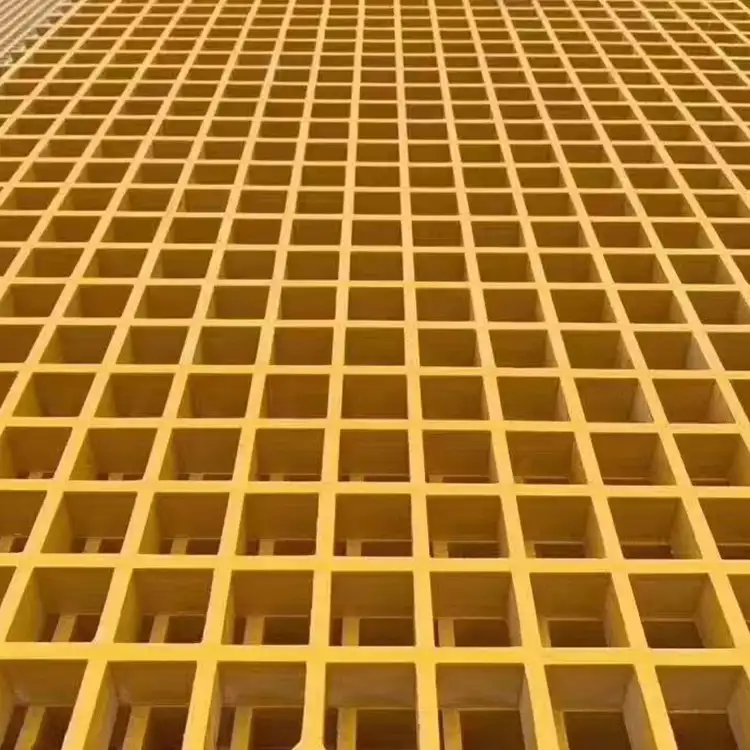Understanding FRP Grating: The Modern Solution for Industrial Flooring
2024-10-18
FRP (Fiber Reinforced Plastic) grating is becoming an increasingly popular choice for industrial and commercial applications. Known for its strength, durability, and resistance to corrosion, FRP grating offers many advantages over traditional materials like steel or wood. In this blog, we will explore what FRP grating is, its benefits, and why it's a superior choice for various applications.

1. What is FRP Grating?
FRP grating is a type of composite material made by combining a resin matrix with glass fiber reinforcement. This combination results in a lightweight, yet extremely strong material that is resistant to many of the environmental factors that degrade traditional materials. There are several types of FRP gratings, including molded and pultruded options, each suited for different environments and uses.
- Molded FRP Grating: Manufactured by placing layers of continuous glass fibers in a mold, then pouring resin over them. This creates a one-piece construction that is ideal for high-strength applications.
- Pultruded FRP Grating: Produced by pulling continuous fiberglass strands through a resin bath and then through a heated die, resulting in strong and rigid panels suitable for longer spans.
2. Key Benefits of FRP Grating
There are several key advantages to choosing FRP grating over traditional materials:
a) Corrosion Resistance
One of the biggest advantages of FRP grating is its resistance to corrosion. Unlike metal gratings, FRP is impervious to rust, which makes it ideal for environments exposed to moisture, chemicals, or saltwater. This is particularly beneficial for industries such as chemical processing, wastewater treatment, and marine operations.
b) Lightweight
FRP grating is much lighter than steel or aluminum, which makes it easier to handle, transport, and install. This can lead to reduced labor costs and less strain during installation, particularly in large-scale industrial projects.
c) Non-Conductive and Fire Resistant
FRP grating is non-conductive, making it a safe option for electrical and high-voltage environments where metal gratings would pose a risk of electrical shocks. Additionally, many FRP gratings are fire-retardant, ensuring safety in environments where fire hazards are a concern.
d) Durability and Low Maintenance
FRP grating is highly durable and requires very little maintenance. Its resistance to weathering, UV light, and harsh chemicals means it retains its structural integrity and appearance for many years without the need for frequent upkeep, such as painting or rust treatment.
e) Slip Resistance
Many FRP gratings are designed with textured surfaces, offering excellent slip resistance. This makes them ideal for use in areas where workers are at risk of slipping, such as on catwalks, ramps, or in wet or oily environments.
3. Applications of FRP Grating
FRP grating is used in a variety of industries due to its versatility:
- Industrial Flooring: Ideal for areas where corrosion resistance and slip resistance are critical, such as chemical plants or offshore platforms.
- Walkways and Platforms: FRP grating can be used to create safe walkways in hazardous environments, especially in corrosive or moist conditions.
- Marine Environments: Thanks to its resistance to saltwater, FRP grating is widely used in docks, piers, and offshore facilities.
- Public Areas: Due to its non-slip properties, FRP grating is increasingly used in public spaces such as parks, pedestrian bridges, and boardwalks.
Conclusion
FRP grating is a modern and efficient solution for various industrial and commercial applications. Its lightweight nature, combined with exceptional durability, corrosion resistance, and slip-resistant properties, makes it the preferred choice for many industries. By choosing FRP grating, businesses can enhance safety, reduce maintenance costs, and ensure longevity in harsh environments.


